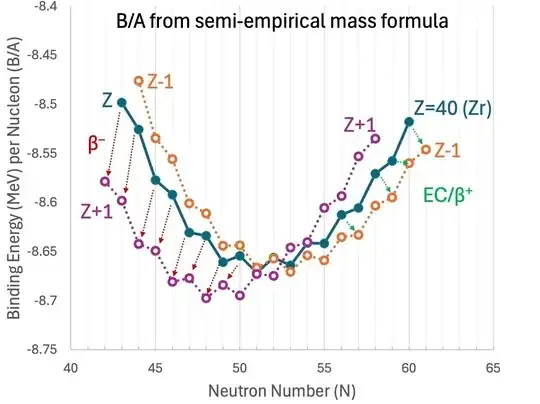I’m a radiation oncologist resident, and physics is part of my daily studies. Recently, while studying electron capture, I came across the following passage on Wikipedia:
I thought I had a good understanding of the topic, but this sentence confused me. Let me explain my question:
As I understand it, in electron capture, the nucleus of an atom captures an electron from its inner orbital. This electron combines with a proton in the nucleus, forming a neutron. As a result, the atomic number decreases by 1, while the mass number remains the same.
For example: An element with mass number and atomic number decays via electron capture, producing a new element with atomic number − 1 and the same mass number , along with a neutrino and energy .
Here’s where my doubt comes in: for the energy to be released, doesn’t the parent element necessarily have to be more massive than the daughter element ? After all, the energy released should correspond to the difference in mass between the two, right?
If that’s the case, why does the Wikipedia passage suggest that isotopes lighter than the stable ones tend to decay via electron capture? This seems contradictory to me, as I would expect electron capture to occur when the parent nucleus (being heavier) could release enough energy to form a more stable daughter nucleus.
I’d appreciate it if someone could clarify this for me!
